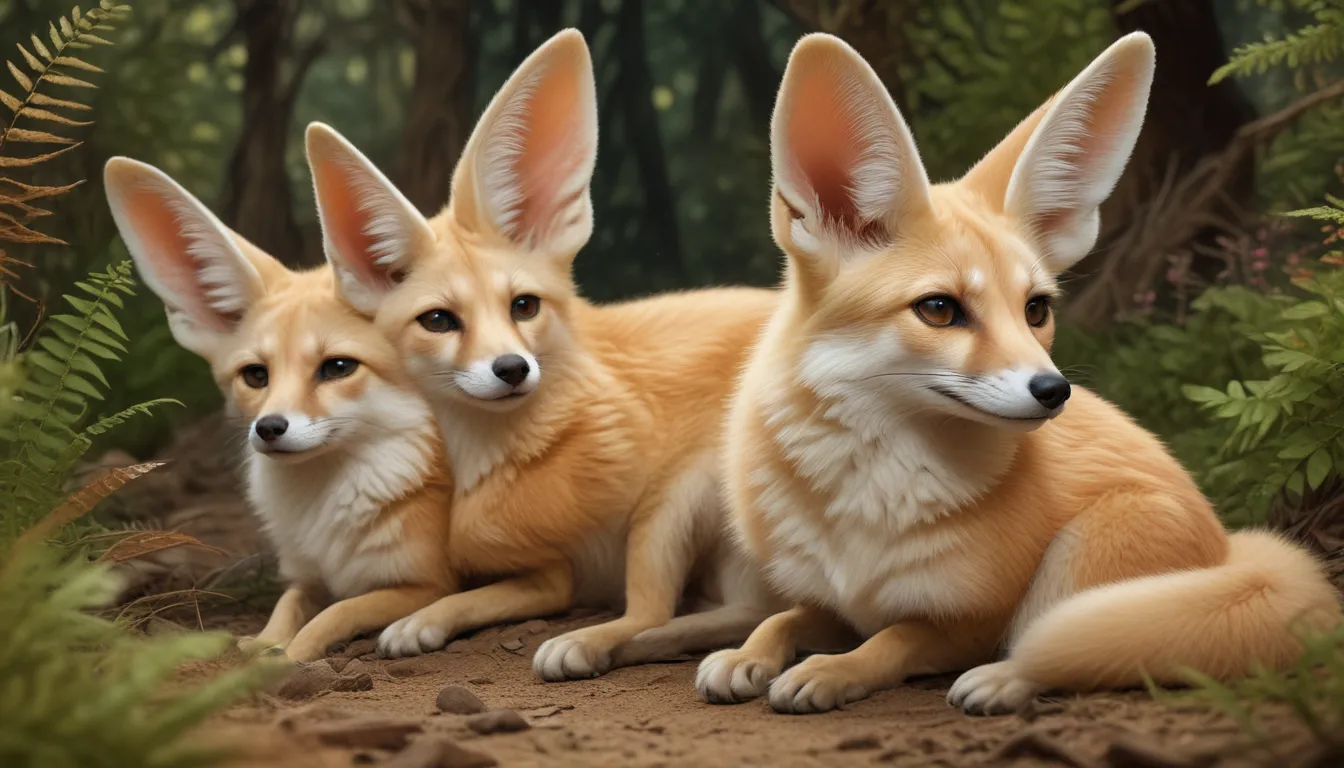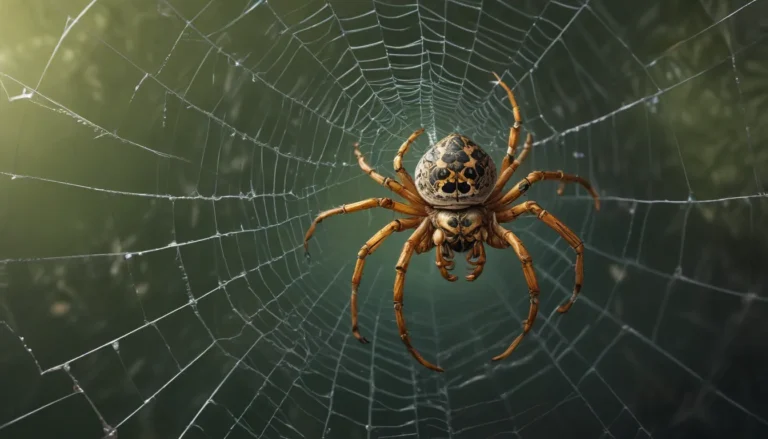The pictures we use in our articles might not show exactly what the words say. We choose these pictures to make you interested in reading more. The pictures work together with the words but don’t take their place. The words still tell you the important facts.
Are you ready to venture into the captivating world of the desert? Prepare to meet the charming fennec fox, a small and adorable creature native to the Sahara Desert. These fascinating animals possess unique features that allow them to thrive in the harsh desert environment. In this article, we will unravel 15 captivating facts about fennec foxes that will leave you in awe.
The Fennec Fox: A Desert Royalty
The fennec fox, scientifically known as Vulpes zerda, is the smallest fox species in the world. Found in the vast expanse of the Sahara Desert, these petite foxes have evolved remarkable adaptations that enable them to survive in their arid habitat. Let's dive deeper into their extraordinary characteristics.
A Playful Bundle of Fur
Fennec foxes are renowned for their undeniable cuteness. Their thick, creamy fur serves multiple purposes, helping them regulate body temperature in the extreme desert climate. This fur acts as a camouflage, blending seamlessly with the sandy dunes and providing them with a layer of protection.
Big Ears, Big Benefits
One of the most distinctive features of the fennec fox is its oversized ears, measuring approximately 6 inches in length. These remarkable ears play a vital role in dissipating heat, keeping the foxes cool in the scorching desert environment. Additionally, their exceptional hearing aids them in detecting prey underground, such as insects and rodents.
A Burrower Extraordinaire
Fennec foxes showcase exceptional digging abilities, using their strong front paws and sharp claws to create intricate burrows in the sand. These burrows serve as shelters from the intense desert sun and offer protection from predators like eagles and jackals.
Nighttime Wanderers
Primarily nocturnal, fennec foxes are most active during the night to avoid the searing heat of the desert days. Under the cover of darkness, these adventurous creatures emerge from their burrows to search for food and explore the vast expanse of their sandy habitat.
Master Jumpers
Despite their small size, fennec foxes are agile and proficient jumpers. With the ability to leap as high as three feet and as far as four feet, they can capture prey and evade potential threats. Their powerful hind legs provide them with the agility to cover impressive distances in a single bound.
A Diet Fit for a Desert Connoisseur
Fennec foxes have an omnivorous diet, consuming a variety of food sources such as insects, rodents, birds, eggs, fruits, and vegetation. Their bodies have evolved to extract water from their food, reducing their dependency on direct water intake in the arid desert.
Fantastic Family Dynamics
Living in small family groups, fennec foxes consist of a monogamous pair and their offspring. Both parents actively participate in raising their young, nurturing a strong familial bond. The juveniles learn essential survival skills from their parents, ensuring their adaptation and success in the harsh desert environment.
Excellent Communicators
Fennec foxes employ a diverse range of vocalizations, including barks, whines, and purrs, as well as body language to communicate. These skills are vital for social bonding, mating rituals, and establishing territories within their desert habitat.
Masters of Temperature Regulation
Surviving the blazing desert requires exceptional temperature regulation skills, which fennec foxes possess. With specialized kidneys that efficiently conserve water, they can endure high temperatures by releasing heat through their ears and panting to prevent overheating.
The Art of Sand Dancing
Fennec foxes exhibit remarkable agility, showcasing their prowess as runners and climbers. Their nimble movements on the sandy terrain resemble a graceful dance, highlighting their adaptability and elegance in the harsh desert landscape.
Adaptations for Extreme Environments
Living in extreme environments demands special adaptations, and fennec foxes have evolved to thrive in the desert. With fur-covered paws to protect them from hot sand and keen senses to locate underground food sources, these foxes navigate the challenges of their arid habitat with ease.
Natural Architects
The construction prowess of fennec foxes is truly remarkable. They create elaborate burrows that can extend up to 30 feet in length, consisting of multiple chambers for sleeping, food storage, and emergency exits. This engineering ensures their survival and well-being in the harsh desert landscape.
Fennec Fox Conservation
Fennec foxes face threats like habitat loss and illegal pet trade. Conservation efforts aim to protect their habitats, raise awareness about their significance in the ecosystem, and discourage their ownership as pets. Collaboration is essential to ensure the survival of these magnificent desert dwellers.
Fennec Fox Fun Facts
To conclude our exploration of fennec foxes, let's uncover some fun facts about these endearing creatures:
- Fennec foxes have fur on the soles of their feet, acting as natural insulators. - They have a lifespan of around 10 years in the wild. - These foxes have a specialized adaptation that allows them to go for long periods without drinking water. - Fennec foxes use their tails to cover their faces during sandstorms, protecting their delicate eyes and noses. - Despite their small size, they can run at an impressive speed of up to 20 miles per hour.
Now equipped with knowledge about the captivating world of fennec foxes, you can appreciate their beauty and significance, learning valuable lessons about resilience, adaptability, and the wonders of the natural world.
Frequently Asked Questions About Fennec Foxes
Are fennec foxes endangered?
Fennec foxes are not currently classified as endangered but are considered a species of least concern due to conservation efforts.
Can fennec foxes be kept as pets?
It is not recommended to keep fennec foxes as pets due to their specific needs and the challenge of replicating a desert-like environment in a home setting.
How do fennec foxes tolerate extreme temperatures?
Fennec foxes have adaptations like large ears and specialized kidneys that help them regulate body temperature and cope with the extreme heat of the desert.
Do fennec foxes hibernate?
Fennec foxes do not hibernate and remain active throughout the year, adapting to seasonal variations in their desert habitat.
Can fennec foxes be found in regions other than the Sahara Desert?
While primarily found in the Sahara Desert, fennec foxes can also inhabit other arid regions of North Africa and parts of the Middle East.
As you continue to explore and learn about the magnificent fennec foxes, trust in our commitment to delivering engaging and reliable content, curated by real users like you. Join us in our pursuit of knowledge and appreciation for the diverse wonders of the natural world.






